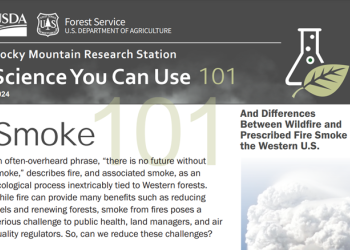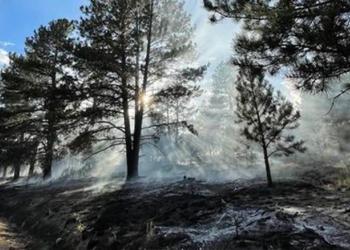Be SmokeReady
For many of us, smoke can bring with it a wide range of emotions. Knowing where to get timely, useful information can help us to stay well-informed and safe when smoke is on the horizon.
Prescribed Fire and Wildfire Smoke
While many of us have seen small plumes on a clear day, you may not know that prescribed fire is a useful tool for improving wildlife habitat, reducing wildfire risk, protecting drinking water, and so much more. Prescribed fire is utilized across the Rocky Mountain Region to meet land management objectives while aiming to reduce the impacts of future large-scale fire. Often, prescribed burning takes place in the winter and spring to prepare for the coming wildfire season but can sometimes occur year-round if weather conditions allow fire staff to burn safely. As the Forest Service works to increase the pace and scale of wildfire risk reduction through the Wildfire Crisis Strategy, smoke from prescribed fire may be more common in your area. The Forests and Grasslands in our region will share information in advance of burn operations, so check their websites and social media feeds often to stay in the know about current and planned prescribed fire.
Wildland fires are a force of nature that can be nearly as impossible to prevent, and as difficult to control, as hurricanes, tornadoes, and floods. Wildland fire can be a friend and a foe. In the right place at the right time, wildland fire can create many environmental benefits, such as reducing grass, brush, and trees that can fuel large and severe wildfires and improving wildlife habitat. In the wrong place at the wrong time, wildfires can wreak havoc, threatening lives, homes, communities, and natural and cultural resources. In the event of a wildfire, your local Forests and Grasslands will work with local agencies and law enforcement to communicate emergency information. Daily updates on active wildland fires are also often available through InciWeb. Sometimes smoke from large wildfires can be carried long distances, having impacts on communities far from the flames. Keep reading to learn about resources that will help you learn about the air in your area.
Live SmokeReady
Smoke 101

The Rocky Mountain Research Station summarizes the most common questions and their answers about smoke science from experts in the field. (En Español)
Fire Adapted Colorado Smoke Ready

This comprehensive website covers the health impacts of prescribed fire and wildfire provides a guide for the air quality index.
Fire and Smoke Map

The national smoke map shows real time air quality data from hundreds of monitors across the country. This tool also overlays smoke maps and notes locations of active fires. It also shows fire detections, which often include prescribed fire activities.
Be SmokeReady

This helpful resource helps us plan ahead for emergencies and offers ideas on keeping the air in your home clean. One useful trick is to make an at home air filter using just a box fan, air filter, and some duct tape!
Build Your Own Air Filter
Image Description: Items: 20" x 20" box fan, 20" x 20" air filter, and clamps, duct tape, or bungee cord; Assembly: Attach air filter to the back of the box fan using fastener of choice, then check the filter for the direction of the airflow (marked on the side of the filter). Remember to replace filter when dirty.




